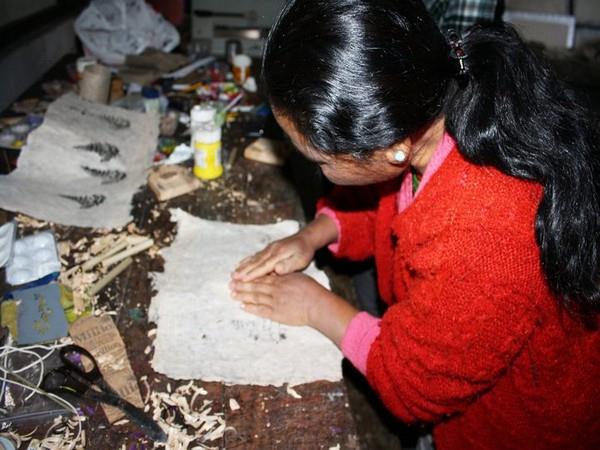|
|

|
|

A 'paper tale' rooted in ancient Monastic tradition in Sikkim's heartland |
|
By
Webindia123 Editor
14.6.2023
Mail Now
|
At the core of this story is a humble, handcrafted product - paper. But not just any paper; this is a product with a rich heritage that spans millennia and reaches as far as Buddhist monasteries and global art studios.

The Borong-Polok Handmade Paper Unit, tucked away within the idyllic precincts of the Wildflower Retreat, 17 km from the bustling Ravangla Town of Sikkim's Namchi district, is more than just a manufacturing unit. It is the embodiment of an age-old Indian tradition that dates back to the 3rd century BC. It serves as a testament to a time when handmade paper was more than a mere carrier of words, it was a secretive craft, where methods of creation were closely guarded.
Beyond its antiquity, the unique role of this handmade paper in preserving and propagating Buddhist teachings over a millennium is what lends this craft its exceptional significance. The wisdom of the ancient scribes, inscribed on these resilient sheets, continues to influence the spiritual journey of countless seekers.
This Sikkim-based cooperative, established in 2003 by the Sikkim Development Foundation and powered by industrious local households, creates paper in harmony with the Himalayan ecology.
Eschewing more common raw materials like dung or textile waste, this cooperative embraces the traditional Himalayan process, using the argali plant, or Edgeworthia gardneri. This shrub, abundant along the trail that stretches between the Ralong Monastery and Borong, imparts a unique charm to their paper.
In a fascinating twist, the argali plant-derived paper in Sikkim is coated with a unique blend of mucilage from the okra plant and another plant named Chipley. This is a deviation from the norm of using muslin fabric to separate paper sheets, where each sheet is pasted on a separate tray to dry. And the outcome is a paper with remarkable resilience, absorbency, and a captivating texture.
This unique production method renders the argali paper transparently beautiful. Light, smooth, and durable, it has been used for manuscripts and official documents in the past.
The paper, available in various grades, finds its way to places like Singapore, Bangkok, and Thailand.
Visitors to this artisanal outpost in Borong can experience this fascinating process firsthand. The cooperative boasts a small showroom, showcasing sheets of paper in their raw form or transformed into vibrantly patterned and coloured sheets.
Beyond sheets, their creativity spills into making notebooks, envelopes, lampshades, paper figurines, and even abstract art decor from the waste pulp.
Next time you're in Sikkim, embark on a journey to Borong. Embrace the tranquillity, admire the heritage, and carry back a slice of history with you, one handmade sheet at a time.
From Buddhist monasteries to international art studios, this humble craft continues its journey, bearing with it tales of tradition, resilience, and spiritual wisdom.